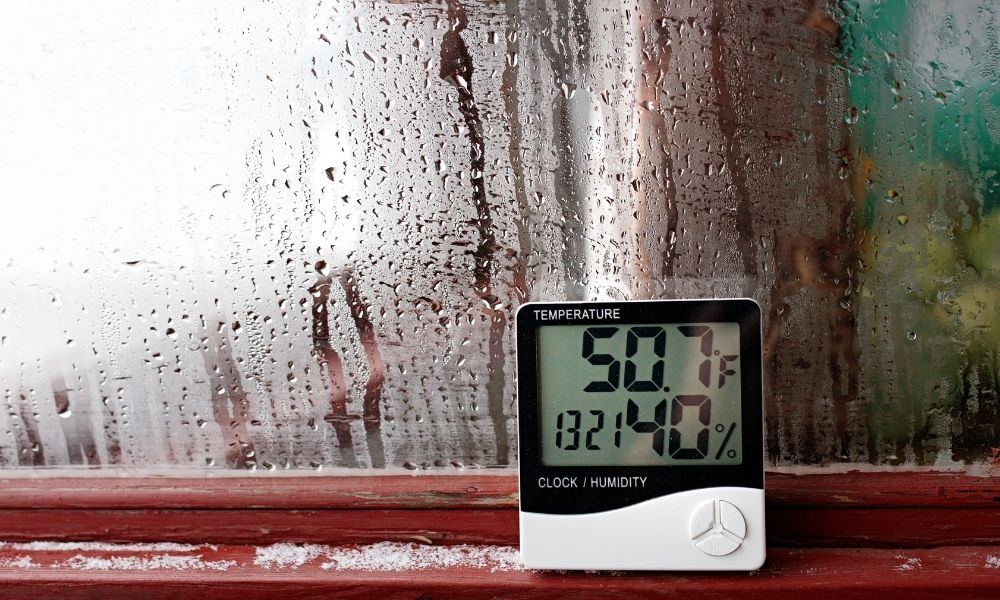Moisture control is essential for maintaining a healthy and safe living environment. When humidity levels rise unchecked, homes become prime breeding grounds for mold, a silent invader that can compromise not only the structural integrity of your space but also the wellbeing of its inhabitants.
This article seeks to unravel practical strategies for moisture control, offering a roadmap for homeowners eager to stave off the ominous threat of mold. From simple everyday habits to more involved home improvements, well explore a variety of approaches, empowering you with the knowledge needed to keep your home dry and mold-free.
Remember, awareness and action are your best allies in this ongoing battle against unwanted moisture and its unwelcome repercussions. So, let’s dive into the world of moisture management and discover how you can safeguard your home against mold issues.
Monitoring Indoor Humidity Levels

Monitoring indoor humidity levels is essential for maintaining a healthy living environment and preventing mold growth. Ideally, indoor humidity should hover between 30% and 50%.
To achieve this balance, invest in a reliable hygrometer to keep a watchful eye on moisture levels throughout your home. Unlike the pleasant scent of freshly laundered linens, persistent humidity can lead to silent trouble, fostering the perfect breeding ground for mold spores.
Utilize exhaust fans in bathrooms and kitchens, and consider a dehumidifier in damp areas, especially during the humid summer months. Regularly check for condensation on windows and walls, as these can be telltale signs of excess moisture.
Adopting these practices not only helps keep humidity in check but also promotes a fresher, healthier atmosphere for you and your family.
Regular Inspection of Plumbing and Appliances

Regular inspection of plumbing and appliances is vital in maintaining a mold-free environment within your home. Often overlooked, small leaks can become significant problems if left unchecked, creating the perfect breeding ground for mold spores.
To avoid this, make it a habit to scrutinize exposed pipes under sinks and behind appliances, like dishwashers and washing machines, for any signs of water damage or moisture accumulation. A quick glance might not suffice; consider using a flashlight to illuminate dark corners where dripping water might escape your notice.
Additionally, schedule routine professional inspections—after all, its better to be proactive than reactive. By staying vigilant and addressing potential issues promptly, you not only safeguard your living space but also preserve the health and well-being of your household.
Mold thrives in the shadows, so let your vigilance shine a light on areas prone to excess moisture.
Smart Landscaping: Redirecting Water Away from Your Home

Smart landscaping is a proactive way to manage water runoff and protect your home from moisture-related issues. By strategically shaping your yard, you can direct rainwater away from your foundation, safeguarding your property from the encroachment of mold and mildew.
Consider incorporating features like swales—shallow channels that guide water to designated drainage areas—or rain gardens filled with native plants that absorb excess moisture. Additionally, grading your land to slope subtly away from your house creates a natural barrier against pooling water.
Small changes, like installing gutters and downspouts that lead far from the foundation, can make a significant difference. Embracing these techniques not only enhances your home’s defenses against dampness but also contributes to a healthier outdoor ecosystem.
Conclusion
In conclusion, maintaining proper moisture control is essential for preventing mold issues in your home. By implementing the tips outlined in this article, such as improving ventilation, using dehumidifiers, and promptly addressing leaks, you can significantly reduce the risk of mold growth.
Regular maintenance and inspections are crucial, so don’t hesitate to consult a professional, such as a Mold Inspection Company, to help identify potential problem areas and ensure your living space remains safe and healthy. Taking these proactive measures will not only protect your home but also provide peace of mind for you and your family.


